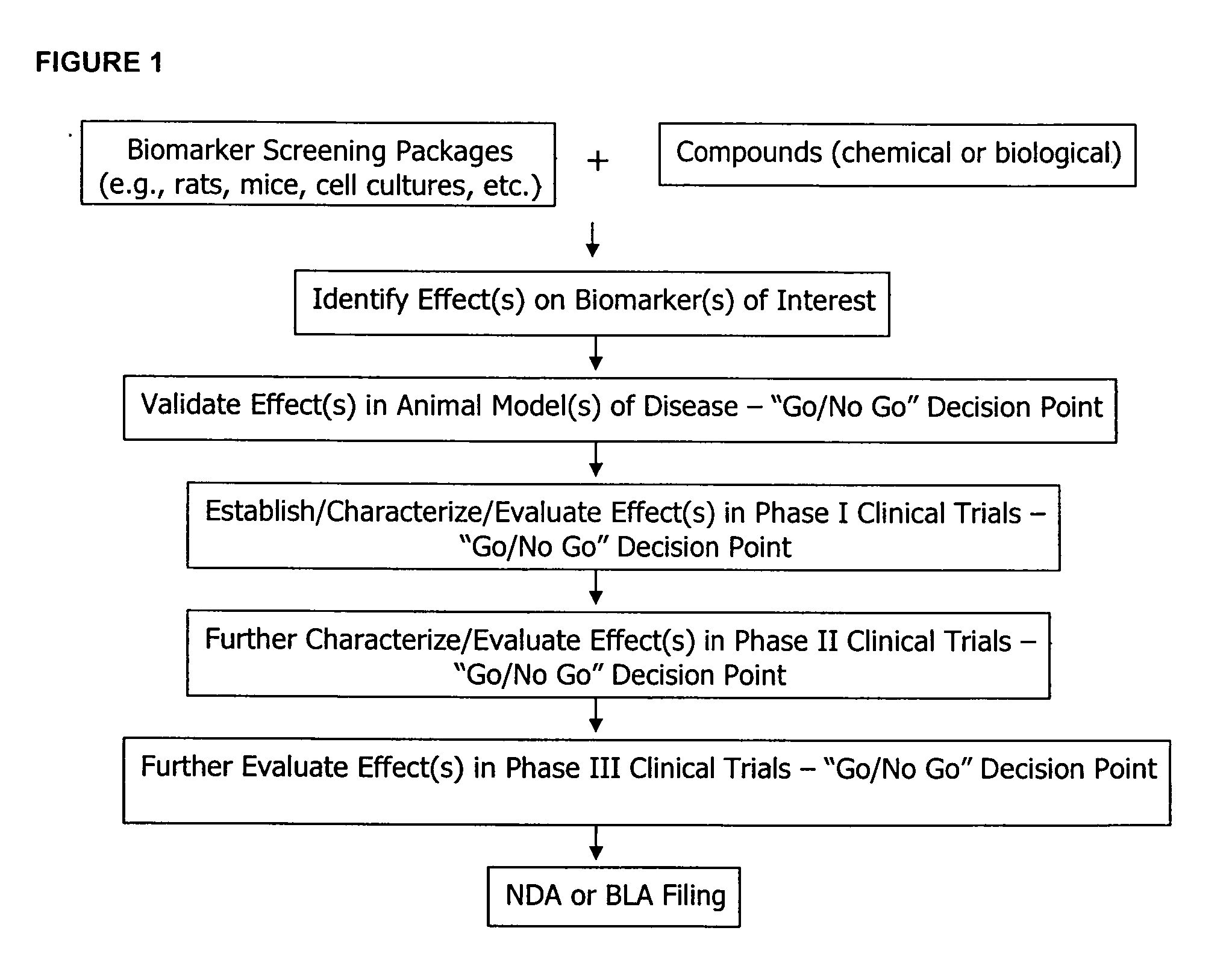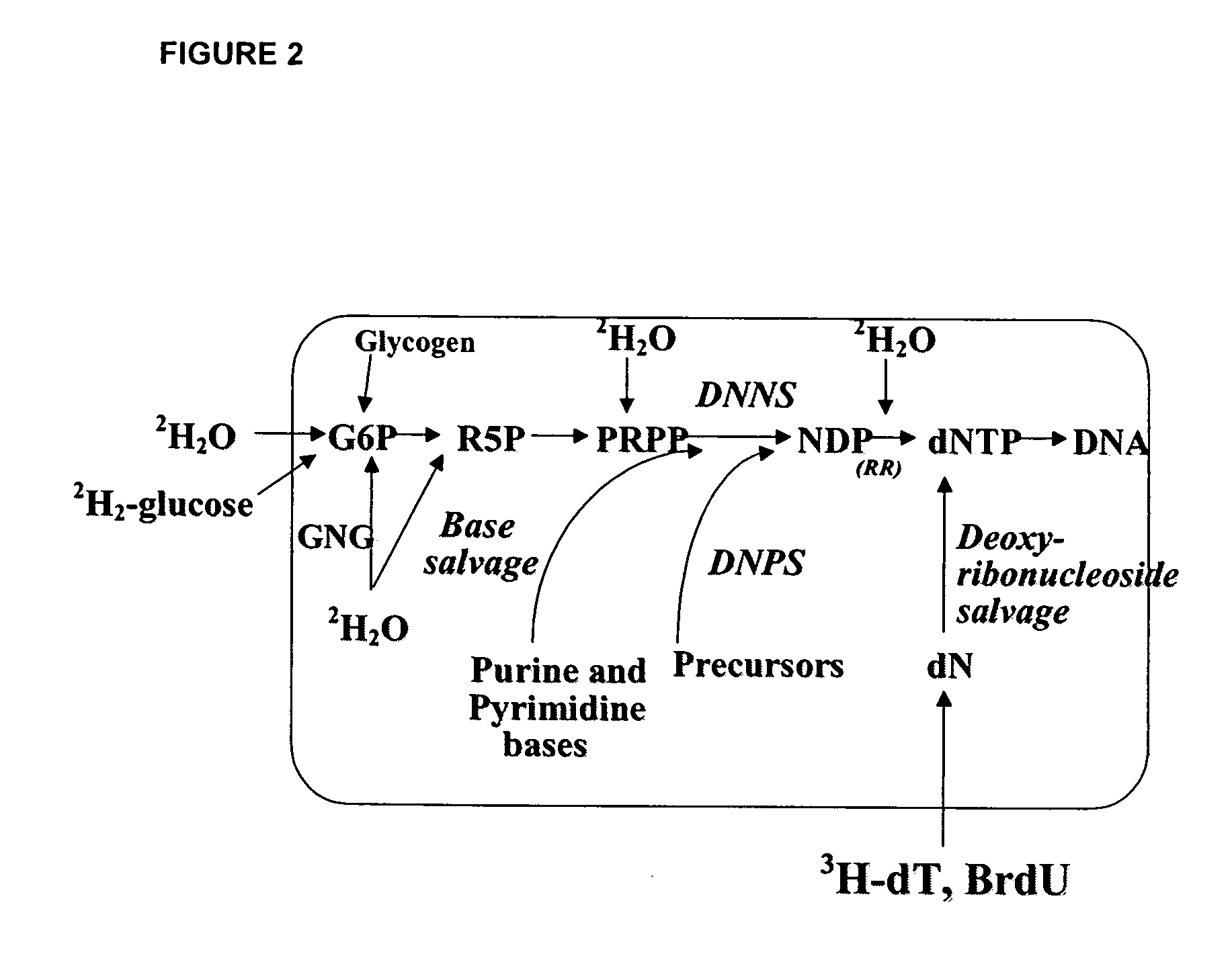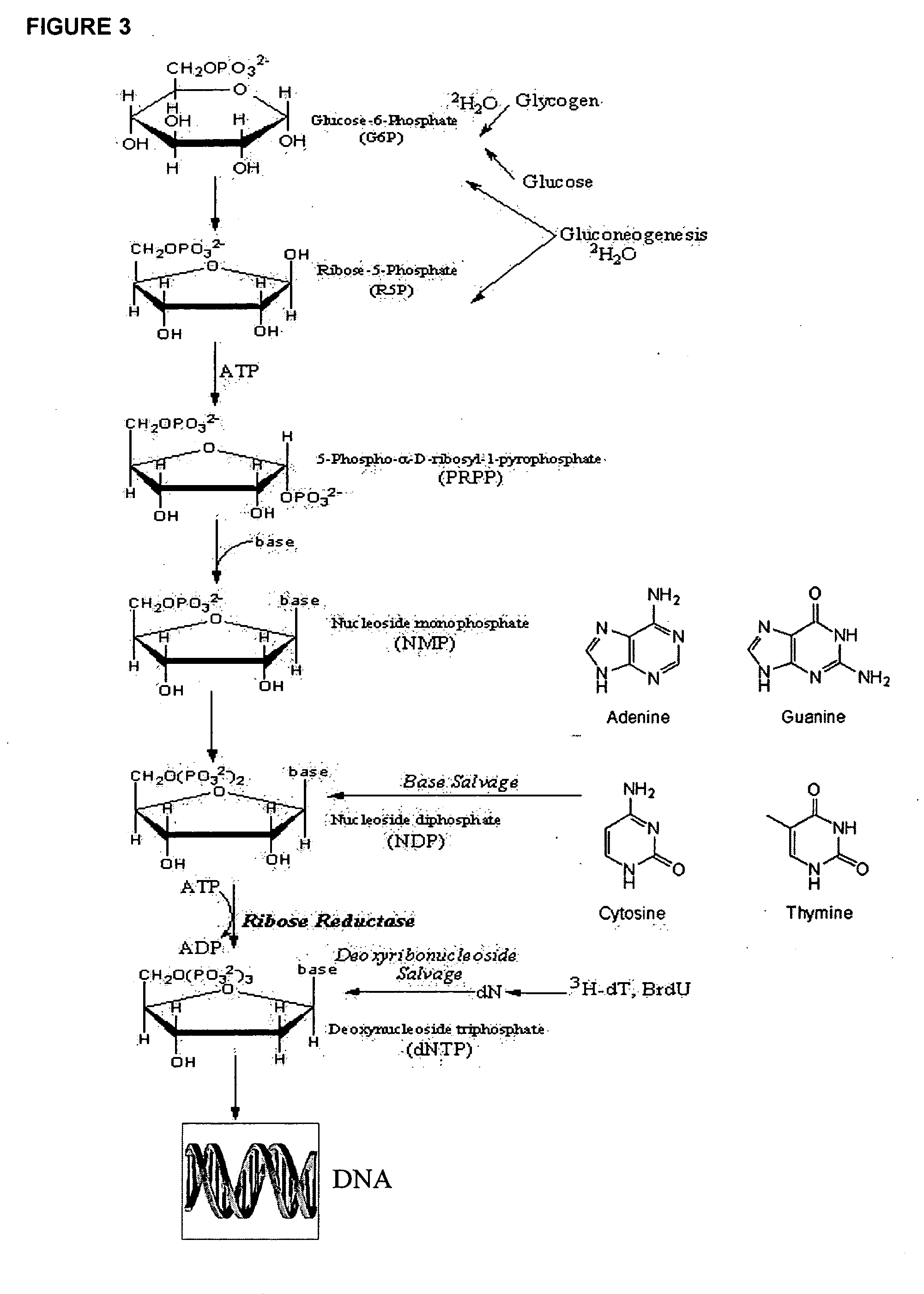Molecular flux rates through critical pathways measured by stable isotope labeling in vivo, as biomarkers of drug action and disease activity
a biomarker and molecular flux rate technology, applied in the direction of instruments, peptide/protein ingredients, antibody medical ingredients, etc., can solve the problems of lack of reliable high-throughput measurement tools, lack of effective tools for measuring molecular flux rates, and lack of technical tools
- Summary
- Abstract
- Description
- Claims
- Application Information
AI Technical Summary
Benefits of technology
Problems solved by technology
Method used
Image
Examples
example 1
Triglyceride Synthesis (Lipogenesis) and Breakdown (Lipolysis) in Rats as a Biomarker of Obesity-Related Diseases or Conditions
[0370] Triglyceride synthesis is the fundamental biochemical process (i.e., metabolic pathway) for fat formation (lipogenesis) and therefore is a biomarker for obesity-related diseases or conditions (obesity itself is a condition and is the principal, but not the only, condition of interest herein). Determining whether a compound or a combination of compounds or a mixture of compounds (e.g., a chemical entity such as a new chemical entity (NCE), or combinations of chemical entities such as a combination of NCEs, drug candidate, or a combination of drug candidates, drug lead, or a combination of drug leads, or an already-approved drug such as one listed in the Physician's Desk Reference (PDR) or Merck Index, or a combination of already-approved drugs, or a biological factor, or a combination of biological factors (or any combination of mixtures of NCEs, drug...
example 2
DNA Synthesis in Rats as a Biomarker of Cell Proliferation
[0385] DNA synthesis is the fundamental biochemical process (i.e., metabolic pathway) for cell proliferation and is therefore a biomarker for cell proliferation. In some settings it may be desirable to stimulate cell proliferation (e.g., wound healing) while in other settings it may be desirable to inhibit cell proliferation (e.g., cancer).
[0386] Rats are administered 2H2O as discussed in Example 1, supra. DNA is labeled by 2H as shown in FIGS. 2 and 3.
[0387] Rats are administered a compound or a combination of compounds or a mixture of compounds or vehicle (controls) as discussed in Example 1, supra.
[0388] DNA is then isolated from the tissue or cell of interest using a Qiagen kit (Qiagen, Valencia, Calif.), following the manufacturer's protocol. Isolated DNA, eluted in water, is adjusted to pH 9-10 and hydrolyzed enzymatically; deoxyribose is released selectively from purine (dA / dG) deoxynucleotides and converted to the...
example 3
DNA Synthesis in Rat Hippocampal Neuroprogenitor Cells as a Biomarker of Neurogenesis
[0391] A compound or a combination of compounds or a mixture of compounds are tested on rats to determine whether they have effects on neurogenesis. Compounds with neurogenic potential (i.e., compounds that stimulate neurogenesis and / or inhibit neuroprogenitor cell death, including inhibition of apoptosis and / or inhibition of necrosis) may find use in treating spinal cord injury, Parkinson's disease, Huntington's disease, and other neurodegenerative disorders. By detecting neurogenesis and or inhibition of neuroprogenitor cell death, the methods allow for the selecting and / or characterizing of compounds for developing and evaluating the agents for treating the disorders listed, supra.
[0392] Rats are divided into exposed and control groups and administered labeled water as in Example 1, supra. After exposure to a compound or a combination of compounds or a mixture of compounds or vehicle if control...
PUM
| Property | Measurement | Unit |
|---|---|---|
| Toxicity | aaaaa | aaaaa |
| Radioactivity | aaaaa | aaaaa |
Abstract
Description
Claims
Application Information
 Login to View More
Login to View More - R&D
- Intellectual Property
- Life Sciences
- Materials
- Tech Scout
- Unparalleled Data Quality
- Higher Quality Content
- 60% Fewer Hallucinations
Browse by: Latest US Patents, China's latest patents, Technical Efficacy Thesaurus, Application Domain, Technology Topic, Popular Technical Reports.
© 2025 PatSnap. All rights reserved.Legal|Privacy policy|Modern Slavery Act Transparency Statement|Sitemap|About US| Contact US: help@patsnap.com



